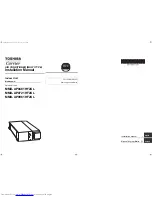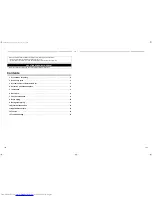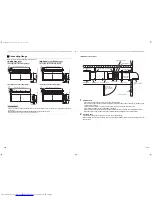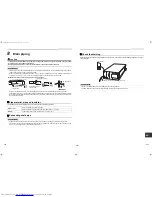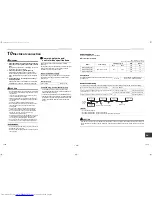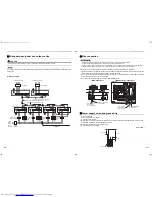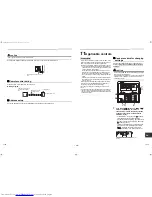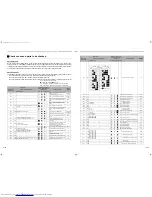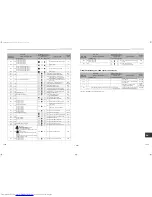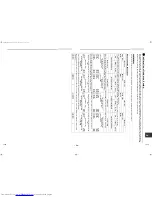
– 6 –
EN
Installation of indoor unit
1
Install temporarily the indoor unit.
Attach the hanging bracket to the hanging bolt.
Be sure to fix the hanging bracket from both up and down sides of the hanging bracket by using the nuts
(3/8" (M10) locally procured) and the washer.
2
Using nut, adjust height of the main unit.
3
Check the main unit is horizontally installed.
Attach canvas ducts (locally procured) to the air intake and the air discharge so that vibration of the main unit
does not travel to the duct or ceiling.
Attach also acoustic-absorption material to the inner liner of the duct and the vibration-proof rubber to the
hanging bolt.
REQUIREMENT
Make sure that the unit is hanging level.
If it is hung horizontally, the drain pan may overflow. Install the unit within the dimensions indicated below.
Using a level vial or vinyl hose, check whether the indoor unit is hung horizontally or not.
Front view
Side view
Hanging bolt
Nut (Upper side)
Washer (Upper side)
Heat insulator
(Hanging bracket main unit)
Washer (Lower side)
Nuts (Lower side)
Main unit
Level vial
Install the main unit within 0.2" (5 mm) while lowering the
drain pipe connecting port side slightly.
0.2" (5 mm)
or less
Water pouring
Level vial
Vinyl hose
± 0.2" (5 mm)
Install both air intake and air supply port sides
within ± 0.2" (5 mm).
6
Duct work
CAUTION
Be sure to apply heat insulation to the duct to prevent dewy condition.
If there is an incomplete duct work, the water leakage into the room may happen.
REQUIREMENT
• In order to prevent short circuits, design the duct work so that the intake and discharge openings are not adjacent to
each other.
• Install the filter chamber on the intake side of the indoor unit. Attach the long life prefilter and high-efficiency filter to
the filter chamber to remove dust. Send outside air to the inside of the indoor unit and the area being air conditioned.
• If no air filter is installed, dust will collect in the heat exchanger, which may cause the air conditioner to fail or to leak.
• Be sure to set the duct at air intake side with descending inclination because the suction duct of the this unit is
exposed to outdoors and therefore rainwater, leaves and birds are easy to enter in if it is set horizontally.
Attaching wire netting and others to end of the suction duct is also recommended.
• Connect the duct so that the air intake sucks outside air only.
Be sure to apply heat insulation for the duct to prevent dewing.
(Recommended material: Glass wool or foam polyethylene, Thickness: 1.0" (25 mm))
• When welding the duct at the site, sparks may enter in the air filter or heat insulator.
To avoid spread of the fire, cover the duct with iron plate, etc.
• When penetrating metal lath, wire lath or metal plank with the metal duct, isolate the duct from the wall electrically.
• Set the canvas ducts at air intake port and air supply port. It is to avoid conveyance of vibration, abnormal resonance
sound and also to make easy the disassembly of the main unit in service time.
• Connect the ducts so that the ducts do not weight on the main unit.
If connecting the ducts directly to the main unit, the duct vibration abnormal sound from the main unit may happen,
and also the filter and service panel cannot be detached.
• Be sure to fix the ducts by using the hanging bolts.
Duct work
After installing the product, perform the duct work according to the working diagram.
11-EN
12-EN
+00EHEH99887601.book Page 6 Thursday, April 21, 2016 9:44 AM

